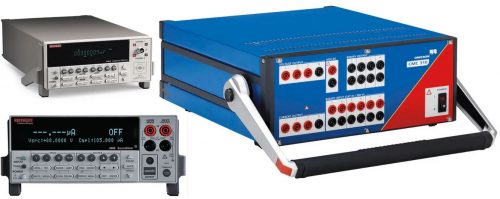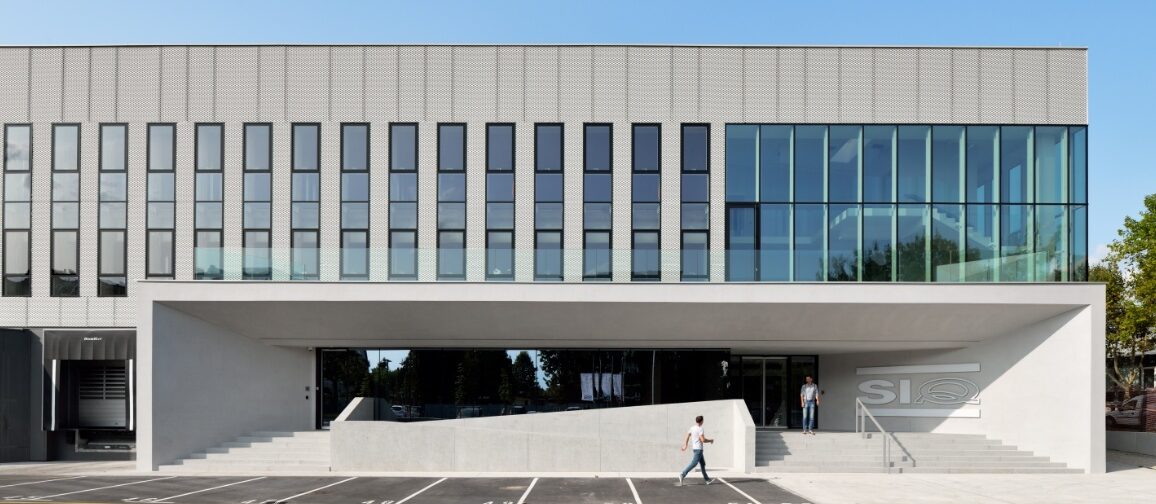DC and AC measurements
Universal multimeters, DMMs
Universal multimeters are calibrated at:
- direct and alternating voltage
- direct and alternating current
- resistance, capacitance, and frequency
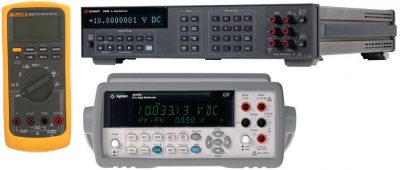
Universal calibrators
The standard calibration parameters are:
- AC/DC current and voltage
- capacitance
- generation/measurement of TC (different types of thermocouples)
- 4- and/or 2-wire resistance measurement
- measurement of phase angle between Normal and Aux outputs at different frequencies
- frequency
We also calibrate oscilloscope’s SCOPE option:
- AC and DC voltage
- square wave
- fast edge
- leveled sinewave
- time marker
- wave generator
Before calibration, 24 hours preheating is required.
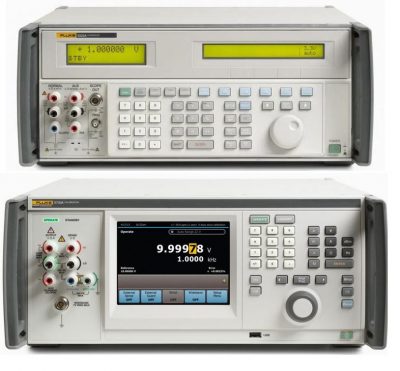
AC measurement standard
The AC measuring standards (e.g., Fluke 5790A) are extremely accurate AC meters (e.g., measuring range from 2.2 mV to 1000 V in the frequency range from 10 Hz to 1 MHz with a manufacturer’s specification of 24 ppm). Please note that exact frequency range depends on amplitude range.
Calibration parameters:
- direct voltage
- AC/DC transfer
- wideband input AC accuracy
- wideband input impedance
Estimated calibration time is approximately 14 days.
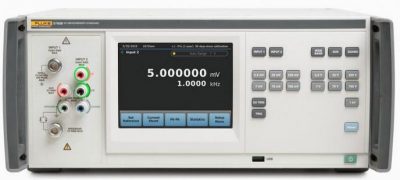
Meters (μΩ-, mΩ-, Ω-meters), resistance simulators (RTD, calibrators), standard resistors, resistors, high-ohm resistance decades, shunts, etc.
We calibrate direct resistance as well as an impedance at different frequencies.
Calibration of a direct resistance or a direct current is performed by measuring voltage drop on the standard resistor or by using zero-flux system. The measuring currents are usually higher when calibration lower resistances (above 1 A or even over 100 A).
Simultaneously we calibrate the measurement time by a comparison method, and we calibrate different measurement currents directly or by measuring a voltage drop on standard resistors. High-ohms resistors are calibrated at different voltages.
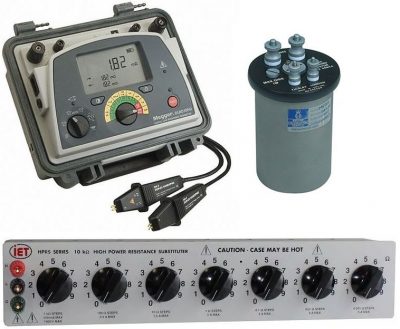
Voltage sources and electronic loads
Calibration parameters of voltage sources are:
- AC or DC current
- ripple and noise (presence of AC component at DC generated voltage)
- stability due to variations in supply voltage
- stability due to change of the load (output loaded with different power resistors)
Calibration parameters of electronic load:
- voltage
- current and
- power
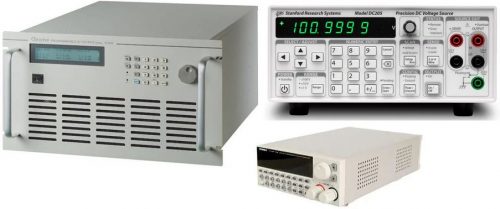
Current clamps (coils, sensors, transducers), current and voltage transformers
According to operation principle we distinguish two types of current transducers and clamps:
- Hall effect principle and
- Rogowski coils, which operate on Faraday’s induction law when measuring electric current.
Higher currents can be generated directly or over a specified number of turns. On calibration certificate we unambiguously mark serial numbers of clamps, measurement channel number and other settings when clamps, coils or transducers are included in the measuring system.
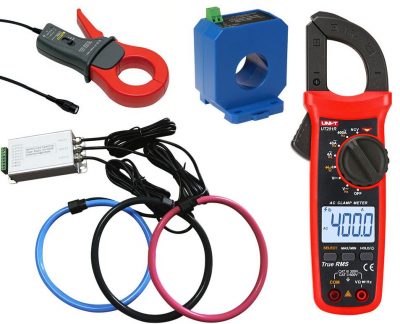
Alternating and direct power meters
Calibration parameters of power meters:
- AC/DC voltage and current
- DC and AC power (The power can be measured directly or by using associated clamps, coils, or transducers)
- power factor (PF) at positive and/or negative phase between voltage and current
- frequency
- harmonic distortions for current and voltage signals
- other parameters (torque, revolution-RPM…)
Typically, we calibrate all channels. It is important that the corresponding measuring equipment is used on the same channels and using the same settings as during calibration.
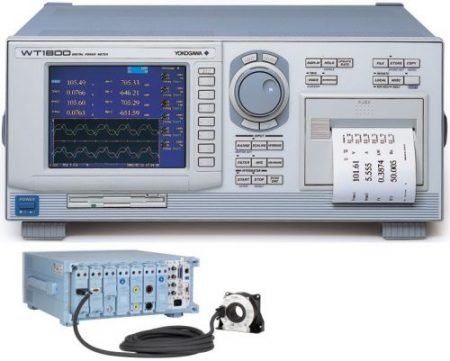
PQ analyzers, installation meters, network parameter meters
Calibration parameters for network quality analyzers are:
- AC voltage and current (measured directly or via associated coils)
- PQ parameters (THD or total harmonic distortion, individual harmonic components, flickers, interharmonics, dip/swell)
- alternating power
- phase 0° to 360°
- other parameters related to network quality
The main calibration parameters for installation meters are:
- DC and/or AC voltage
- insulation resistance
- insulation voltage (IR)
- measuring current
- ground resistance
- RCD times
- RCD circuit currents
- impedance (absolute and relative measurement)
Other calibrated parameters:
- short circuit current
- open circuit voltage
- different measuring currents
- low resistance
Calibration is carried out at 50 Hz and/or 60 Hz.
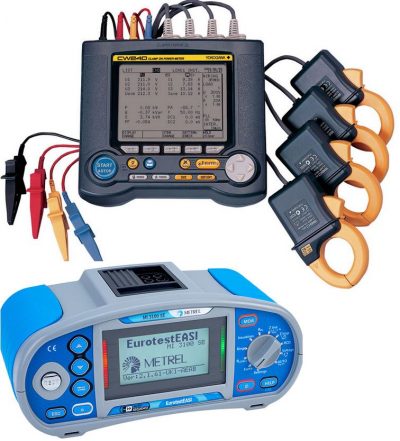
Other measuring instruments
In addition to instruments listed above we also calibrate:
- measuring circuits (frequency characteristics)
- different types of digital and analogue multimeters
- AC and DC voltmeters
- nanovoltmeters, followed by amperemeters and nano and micro amperemeters
- different resistance calibrators, generators, or simulators
- high-ohm and low-ohm decades
- resistance of resistors and shunts measured at different currents
- chargers
- battery analyzers
- relay test systems
